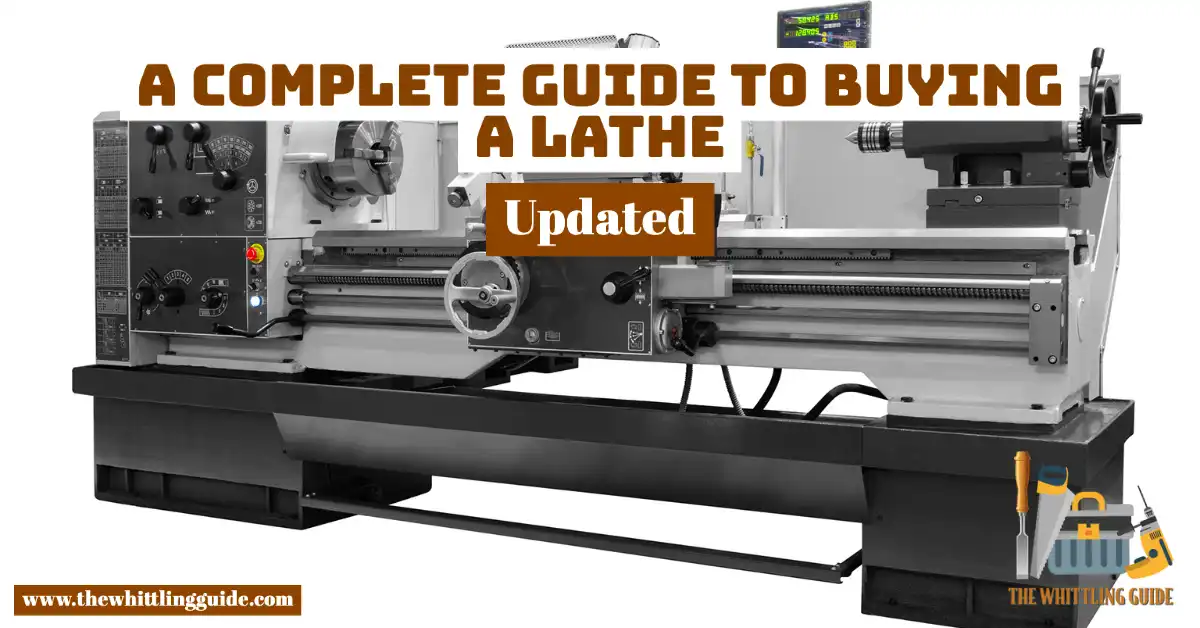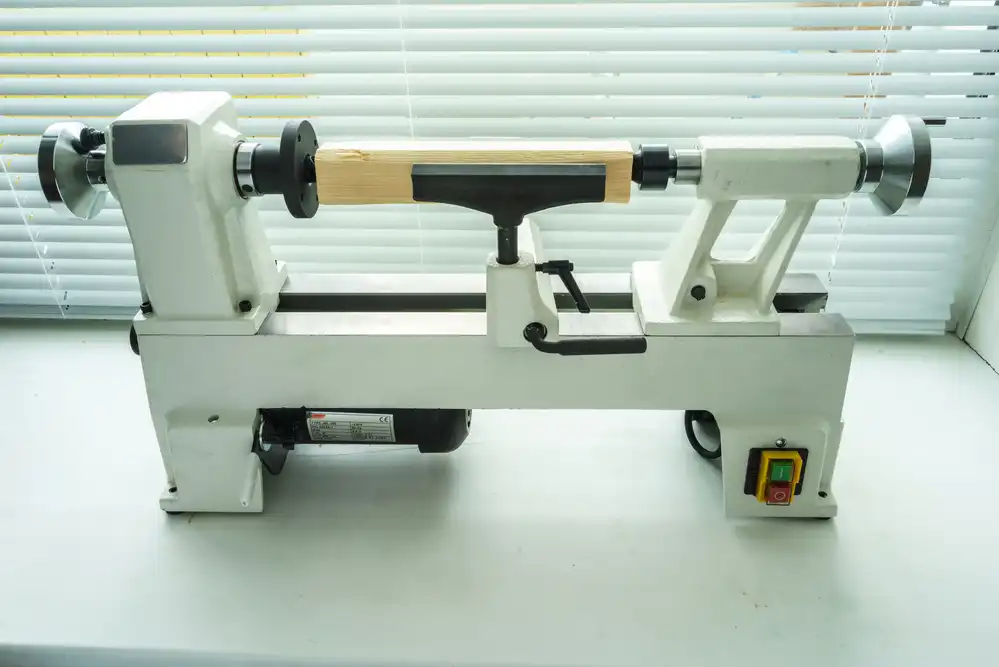
Buying a lathe is a big decision. There are so many things to think about when purchasing a lathe. If you buy one for the first time, there are many things to consider. This article provides some advice to help you decide. Lathes are tremendously valuable tools. It’s easy to get confused by all the options on the market, so we’ve put together this buying guide to help you get started.
What should I look for when buying a wood lathe?
The project you want to turn
Although there are multiple features to consider when buying a wood lathe, ask yourself about the turning projects you want to run. If you are not sure, you are allowed to experiment. Try joining a club meeting or a guild to try a few projects out and know what attracts you the most. When you know, look at your budget.
Budget
What is your budget range? You need to score wood, buy accessories, and use woodturning tools that help you mount and turn on the lathe. The lathe is the engine of the car you need to choose carefully. The accessories are going to guide you as you get a lathe. Your cover the lathe, woods, turning tools (chisels, gouges), and a dust extraction system. All of this will help you figure out your price range.
Growth
Ask yourself if the lathe you afford has room for growth. It has to be relevant to your future projects. As much as you buy a lathe that matches your projects, leave room for future projects. These are developments in your turning skill.
Try to make a rough sketch since you cannot sometimes predict your plans. Try to get a bigger lathe as long as your space and budget allow. A big lathe turns small things, but a small one does not. That makes your investment last longer.
Size Consideration
The overall size of the wood lathe determines your project limit. You have three options in the market, and these are:
Full-size
The standard professional full-size wood lathe allows you to grow as high as possible. Mount any project, such as large bowls, platters, big furniture legs, or any unbalanced chunk of wood. Mount anything on the lathe, and it still works.
Midi Lathe
A Midi Lathe is worth trying when your projects do not require the extra swing capacity like a full size. You can turn 12 to 14 inches bowls with these lathes quite comfortably as they have decent Horsepower and adequate torque while working at lower rpm.
Mini wood Lathe
Mini lathes are about 8″ and swing over the bed with 12″ to 14″ between the centers. It works on smaller projects such as making pens, pots, and candlesticks. A small benchtop unit will be enough, but if there is a need to improve, upgrade to a bigger size.

Industrial lathe
An Industrial Lathe is designed for heavy-duty work. They come with more power than other sizes, and some models even offer up to 400 horsepower. An industrial lathe also offers better control over speed and RPMs. Most importantly, they are built to handle heavier loads.
Weight
Woodturning faces a lot of vibration. Check if your lathe weights sit firmly during work. The lack of proper weight makes handling the unbalanced logs almost impossible. Some lathes vibrate without even mounting anything on them.
Material
Wood lathes are cast iron, which is great at absorbing vibration. Sometimes you can have materials like- steel or stainless-steel beds with cast iron legs. These lathes are more efficient at dampening vibrations.
Motor
Check out how much Horsepower the motor of your lathe can supply. The motor is your engine, and that makes it important to consider. Check the power required to see if it would be enough.
Variable speed control
This feature lets you adjust the speed of the spindle according to the material being turned. This helps reduce heat build-up and increase productivity. Variable speeds let you set different speeds depending on the wood used. For example, softwoods take less time to cut compared to hardwoods. If you want to learn more about this, read our article here.
Dust collection
If you plan to use your lathe often, then you should invest in a good dust collector. Any piece of wood you work on will produce some waste material in the form of dust, and a dust collector manages this for you.
Maximum diameter
It would help if you always considered the maximum diameter your lathe will permit. The distance between centers defines this. Your lathe may allow turning only half an inch thick boards, but you cannot expect to make something thicker than that. Always check before buying.
Speed range
Your lathe must support all types of wood, from soft to hard. Also, it should be able to operate within a wide range of speeds. Make sure your lathe supports both slow and fast cutting operations.
Bed height
Adjustable beds help you get into tight spaces easily. Most lathes have adjustable heights, which is true for wood and metal lathes. A full-size lathe usually comes with two levels; one for woodworking and another for metalwork.
Accessories
Some lathes include accessories like:
• Wood storage bins
• Storage drawers
• Workbenches
• Tool holders
• Safety guards
• Dust collectors
• Speed controls
• Vibration dampeners
• Other features
How do you size a lathe?
- The chuck is a circular metal object that spins to shape the material. It has a hole in the center of it. Locate the hole in the center of the chuck. Visualize this as the hole in a doughnut.
- Consider your first measurement done. The bed is the flat surface your material rests on as you shape it. Measure the distance in inches from the center of the chuck to the nearest point on the bed. That is the first measurement. The distance between the center of the chuck to the bed multiplied by two gives you the swing. That is the largest diameter of the material to be turned over.
- Measure the distance between both ends of the chuck center using a tape measure. Measure through the hole in the chuck as you measure the chuck’s length. The measurement tells you the maximum amount of material you can deal with. That way, do not struggle to estimate the proper material size.
- Combine the measurements to get the size of your lathe.
What is undercutting in a lathe?
An undercut is a specific recessed surface you cannot access using a straight tool. When it comes to turning, it is a recess in diameter on the inside diameter of the part. It is similar to a grooving operation done inside a hole. It is also similar to a boring operation. The only difference is that it does not come with a square nose parting.
What is the cutting speed in the lathe?
Cutting speed is the speed at which the work moves concerning the tool. It is in feet per minute. When setting the speed, consider the material to be cut and the tool’s material. The cutting speed and feed determine the surface finish, power requirements, and material removal rate.
Lathe guide
- Set up the lathe and the cutting tool to match your project. Mount a small bench lathe on a sturdy bench or pedestal.
- Mount the workpiece into the headstock of the lathe using a jaw chuck. A jaw chuck is a type of holder.
- Put the chuck guard on, select the direction of the rotation, and turn on the lathe.
- Put on your safety gear.
- Rotate the lathe at a certain RPM.
- Slowly move your tool post near the rotating workpiece and give a light pass.
- Slide the carriage as per your needs to set the cutting tool.
- Know the types of cutting tools and the different operations they carry. Slowly scrape out the materials from the surface of the mounted workpiece.
- Do not stop until the final result.
- Please turn off the switch after the first light pass and rerun it.
- Move the workpiece towards your desired shape after completing the passes with the tools.
What is the purpose of guideways in a lathe?
The guideway’s function is to ensure that the cutting tool operative element moves along a predetermined path. The operative element has to carry the workpiece along with it. The lathe machine moves in a circular motion.
What are the specifications of the lathe machine
- Swing.
- Distance between the headstock and tailstock center.
- Bed length.
- Pitch of the lead screw.
- Horsepower.
- Speed range.
- The number of speeds of the HS spindle.
Bed Swing
This is the angle formed when the axis of the headstock rotates around its vertical axis. This movement allows for the workpiece to rotate while being held stationary. If there were no swivel, the work would have to spin continuously.
How much swing should I use?
Consider how big your projects will be. It would be best to have enough swing to easily reach all parts of the workpiece without bending down too far.
Swing diameter
The diameter of the swing is the distance between two points where the bed swings. For example, if the swing radius is 10 inches, then this means that the bed swings by an arc of 10 inches.
What is the function of a saddle in a lathe machine?
It supports cross-slide movements. It resembles the tool post and is the base for setting different attachments on the lathe machine.
Tailstock
The tail Stock is on the right side above the lathe bed. It supports the long end of the job for holding, minimizes its sagging, and holds the tool for performing different operations like drilling. ,
Headstock
Head Stock is on the left side of the lathe bed. It keeps the driving mechanism and electrical mechanism of a Lathe machine tool. It keeps the job on its spindle and rotates at a different speed by cone pulley. Head Stock transmits power from the spindle to the feed rod, lead screw, and thread cutting mechanism. A headstock with a spindle can rotate at various speeds depending on the design of the lathe machine. There are two kinds of heads: single-speed and dual-speed. Single-speed headstocks have one fixed speed, while dual-speed headstocks have multiple speeds.
Feed Rod
A feed rod connects the headstock to the drive shaft and carries the workpiece’s load.
Lead Screw
This is a crucial component of any lathe machine.
Conclusion
In conclusion, if you are looking for a way to make better furniture or start a lathe business, a lathe is an excellent place to start. There are many options out there, and a lathe is a significant investment, and some features will vary between wood lathe models. Before buying a lathe, do your research and know what you want.
- Grain and Sheen: Teak Oil versus Danish Oil Uncovered - January 10, 2024
- The Cherry on Top: Crafting the Perfect Cutting Board - January 9, 2024
- Polyurethane Water-Based vs Oil-Based: Choosing the Right Finish - January 8, 2024